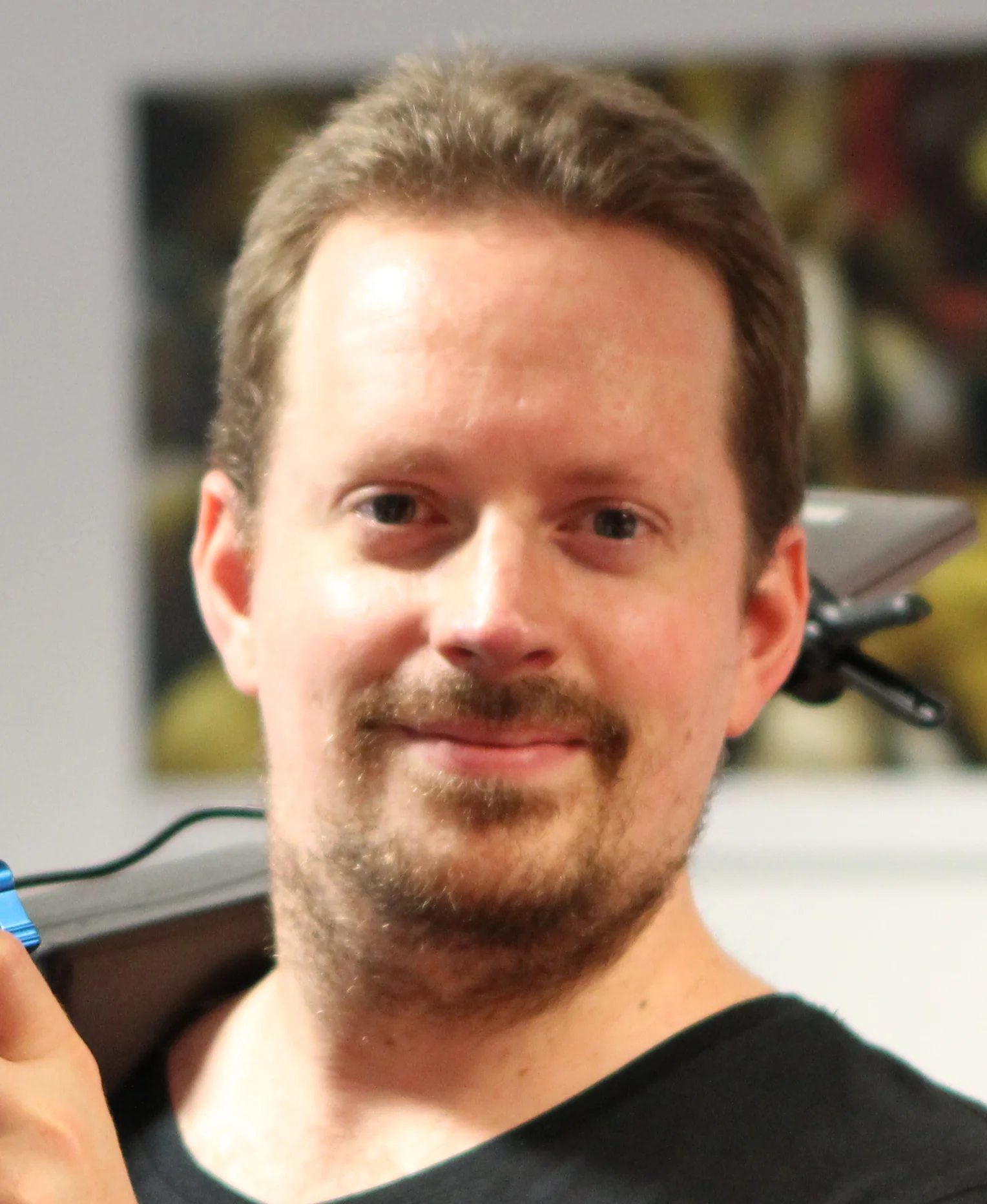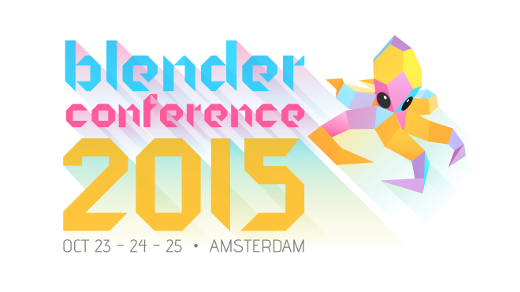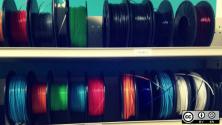Tom H aines is the director and co-founder of 3Dami, a nonprofit educational program in the UK that focuses on teaching 3D animation to teens with ages ranging from 14 to 18 years old. It's a seven-day program in which students produce their own animated films from concept to final viewing.
aines is the director and co-founder of 3Dami, a nonprofit educational program in the UK that focuses on teaching 3D animation to teens with ages ranging from 14 to 18 years old. It's a seven-day program in which students produce their own animated films from concept to final viewing.
At the 2015 Blender Conference, Tom gave a presentation about the program and discussed what's possible with the power of Blender and the open source community. To see all of the student films produced during the 3Dami course, have a look at their YouTube playlist.

Your program is only seven days long. Bringing together a group of strangers (and 14-18 year old ones at that) to cooperate on a single animated short film project is incredibly ambitious. What about film and animation makes it the right choice of medium for your program?
You can't teach an unmotivated student. Making a 3D animated film motivates our students, so effectively we actually have to pull them back and get them to calm down for fear they are going to work too hard! Some of this comes from the glamour of film, the success of companies such as Pixar, and the coolness of visual effects. But I actually think it's mostly about the thirst to create.
Education in the UK puts far too much emphasis on the regurgitation of facts, and opportunities to create something from scratch are relatively rare. This is why we get them to write their own film scripts and do the storyboarding—we are not teaching scriptwriting, but in that act of creation they are dragged into the following tsunami with the desire to do anything to make it a reality, something to be proud of at the premiere.
The team aspect is also important. Peer pressure makes them work harder and adds to that desire to succeed. When you have a team of motivated students, they are willing to work at the very edge of their comfort zone, where they will learn so much more than in a normal classroom. It also gives them a safety net for when they fail, as they have the support of the team in addition to the staff—there is less fear of the unknown when you have friends at your back (which they almost immediately become!).
All of the above is why a 3D animated film is a perfect fit, but it's not the only choice—any group-based project with strong creative and technical aspects may work. We would like to explore a computer game variant for instance, though that does raise difficulties as assets have much tighter constraints, and it's not obvious what to replace the premiere with. Live action visual effects are another option, but I have little enthusiasm for that, as the constraints of filming—particularly if we get professional actors in—will bog down the event and limit their creativity.
There is also a discussion to be had about what we are teaching. It is not our intention to target one particular educational category. Instead, we obtain a wide variety of students ranging from computer scientist through to fine artist. This reflects what you find in an actual visual effects film studio, which adds to the realism of the event. But more importantly, filmmaking requires this broad range of skills, to which we expose all of our students regardless of their background to provide them with a much expanded skill set. These skills are then applicable to some of the larger industries in the UK—film making of course, but also computer games, advertising, architecture, etc. Even for students who never enter these industries, teamwork (also rare in UK education) with a diverse skill set is invaluable whatever you do with your life. 3D animation, and associated skills, are somewhat unique as standing at the intersection of all these major areas.
Finally, I should mention confidence. Talk to one of our students before they attend and whilst they want to make films they just don't know how—it's too big and too foreign a task for them to even try. After they have done it once, under our guidance, the second time is nowhere near as daunting. For this reason, we do see students attend the event using a portfolio of a few images, maybe a short animation, then attend the event again the next year having made an entire short film of their own in the interim.
Your presentation mentioned that you chose Blender because it offers a complete pipeline in a single package. Even with that, were there other open source tools that you found were helpful or necessary?
We also need to prepare 2D assets (textures), for which GIMP and Inkscape are both used. I would like to get MyPaint and Krita (which I prefer to GIMP) installed as well, but the computers we use are running Scientific Linux, which is a rather conservative distro, and installing them has proved unjustifiably time consuming for the support staff. Would also like G'Mic (a plugin for GIMP and Krita) as it contains some useful tools for preparing textures.
We don't tend to focus much on audio at 3Dami, but it's still important for the final film—Audacity is used, particularly when they record their own (we always have microphones and video cameras ready for this kind of task). Despite all of this, it needs to be said that Blender is a truly incredible tool—we actually could run using Blender alone.
Blender is a full-featured program. Did you find that you needed to modify it or change any defaults to make it more suitable to your students or what your program was trying to achieve?
Not really—I certainly don't dumb it down. Young minds are incredibly flexible, and with the right guidance they can use advanced tools without issue, in my experience, particularly when they have a very specific goal. That helps them focus on what they need and ignore everything else (another reason why making a 3D film from scratch is a good project!). The hard part is you need experts in the room to help when they get stuck, and, equally important, an environment where they will ask for help.
The two biggest problems are when they don't know a feature exists, and when there is a golden path you need to follow. Feature blindness is reasonably easy to solve—make sure everybody is talking. The dailies they have every afternoon are great there, as they go around the group and describe what they are doing—anyone who is stuck will then immediately get help from their team. If need be, I can jump in.
A golden path is when you have to do something a certain way or it will break later, but there is nothing warning you about that future problem now. A good example would be modeling a character—you need to get the topology right or it won't deform correctly when rigged. Problems of this kind regularly come up, primarily topology and rigging. One year we actually had a character rigged with its elbows in the wrong place—they couldn't bend its arms without it looking like it had suffered some horrendous injury! This is mostly resolved by walking the room and looking for problems, but I also test all characters before they go into production. A few unfortunate students have got overly familiar with the retopo tools!
For completeness, the changes I make to Blender are to switch auto running of scripts on, and switch on a lot of the plugins, e.g., loop tools, rigify (surprisingly rarely used), node wrangler... Many of those actually make the interface more complicated! Our asset manager also generates default .blend files for each asset type, which I have configured a bit. For instance, when they create a video asset it is by default setup to output h.264 at a really high bitrate. Compositing files default to outputting .exr files. Just minor configuration tweaks to avoid silly issues, basically.
Your talk at the Blender Conference mentioned what some of your students went on to do after completing their films. Have any continued to use Blender and open source tools afterwards?
All of the films they have made afterwards, either on their own or in teams, have been made with Blender. This is not to say they don't also use commercial tools as well, or that this will always be the case, as those who want to enter industry have to be pragmatic and get the necessary experience, which is unfortunately not Blender, not yet at any rate. Still, for group projects I don't see it changing—it's the tool everyone who has been to 3Dami knows.
Many do prefer to use Blender outside our events. Once you have got over the bump of its interface being different to other software, you soon learn just how insanely fast it is—its interface is different for a very good reason, and its hard to accept the slow down of using other software. Some students actually learn that lesson during our event: More than a few have turned up moaning that we aren't using a certain piece of software beginning with "M," but they usually get why we use Blender by the time they leave.
I do know that one of our students is making money using Blender, and I expect others to join them given time.
What's next for 3Dami? Each year you've done this, it seems that you're adding a new location. Is there a plan to branch the program out to other countries? Where would you pick first?
I don't know—it's all so dependent on the funding we obtain. If funding is not an issue, then I would add two locations up north next year, one of which would be in Scotland, making that technically our second country. But I would also like to spread much further afield—I am not fussy about where! If we can find the money, the location, and the staff, then we are game. None of that is easy however, and there are translation issues for countries where English is not the primary language—our asset manager has multi-lingual support, so that is not an issue, but we do have a dependency on online tutorials, which are mostly English and hence too hard for younger students, particularly given the technical vocabulary that is used.
We also have a 144-page book that supports the event, which is again in English, though 3Dami can run without it. Saying all of that, the Netherlands might be a natural second home—I had the opportunity to talk to several people who are working on similar plans there, and it would make a lot of sense to combine resources and see where we can take it. Plus, I like the idea of having more excuses to visit Amsterdam.
Do your students really do everything?
I get this question a lot, mostly with a tone of incredibility! They do it all, and nothing is pre-made for them. They write the script, storyboard, do concept art, build props, sets, characters, rig and animate the characters, render, composite, and do the final edit, including audio. We do allow downloading textures and audio from the Internet, but even then you would be surprised at how many textures they hand paint themselves and how much audio is recorded in the tiny fire shelter near the computer room. (It's a surprisingly good ad-hoc recording studio!)
A decade ago this kind of event would have been impossible—computers with the required capabilities were just too specialist, and all 3D software, including Blender, was much too hard to use. This has changed, and running events like this will only get easier as computers get faster and the knowledge and skills required to run them become more commonplace. I can only see Blender's GUI getting better and easier to use.
It can be argued that the ultimate goal of 3Dami is to make its events irrelevant by building up the resources and know-how to the point where schools are running equivalent events on their own.
 Blender is a free and open source 3D creation suite. The Blender Conference is an annual event held in Amsterdam for developers, designers, and enthusiasts to learn more about Blender techniques, features, and tools.
Blender is a free and open source 3D creation suite. The Blender Conference is an annual event held in Amsterdam for developers, designers, and enthusiasts to learn more about Blender techniques, features, and tools.







Comments are closed.